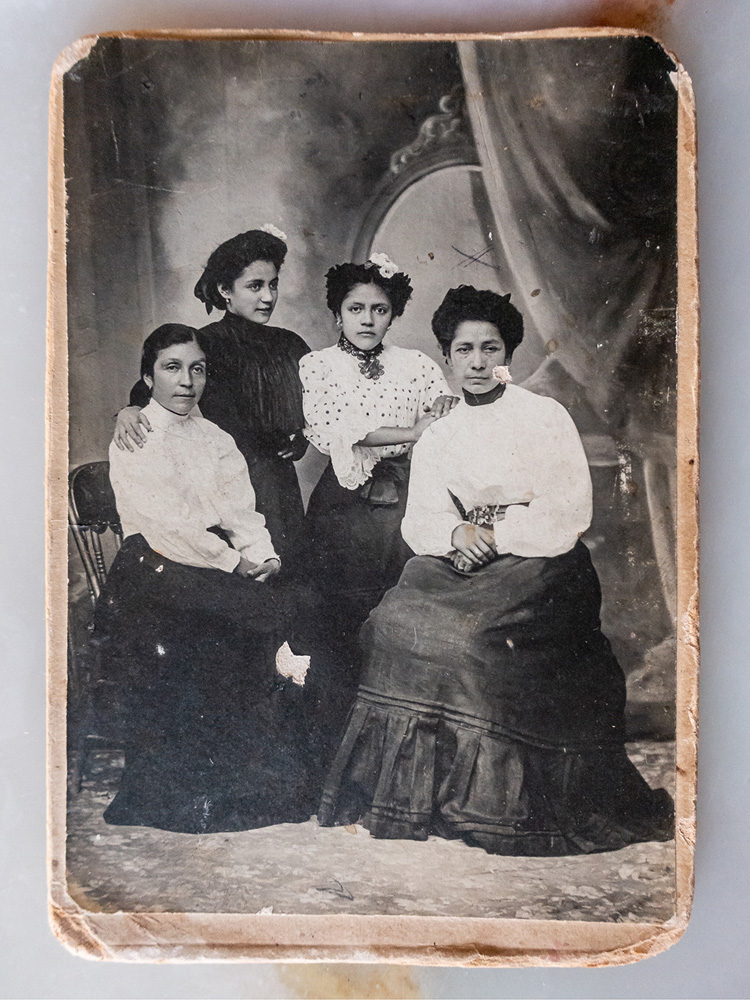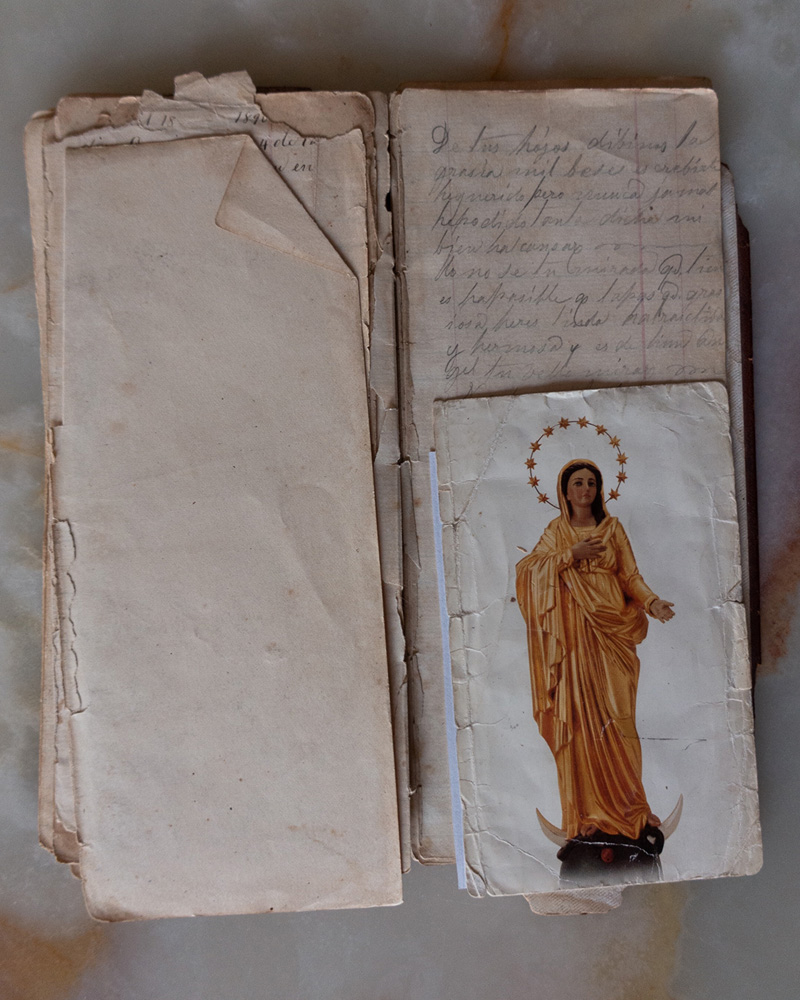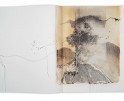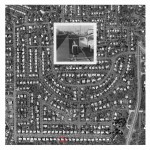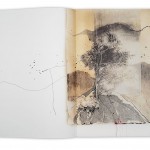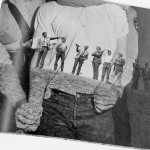THE CENTER AWARDS: EXCELLENCE IN MULTIMEDIA STORYTELLING AWARD: ROBERT PLUMA
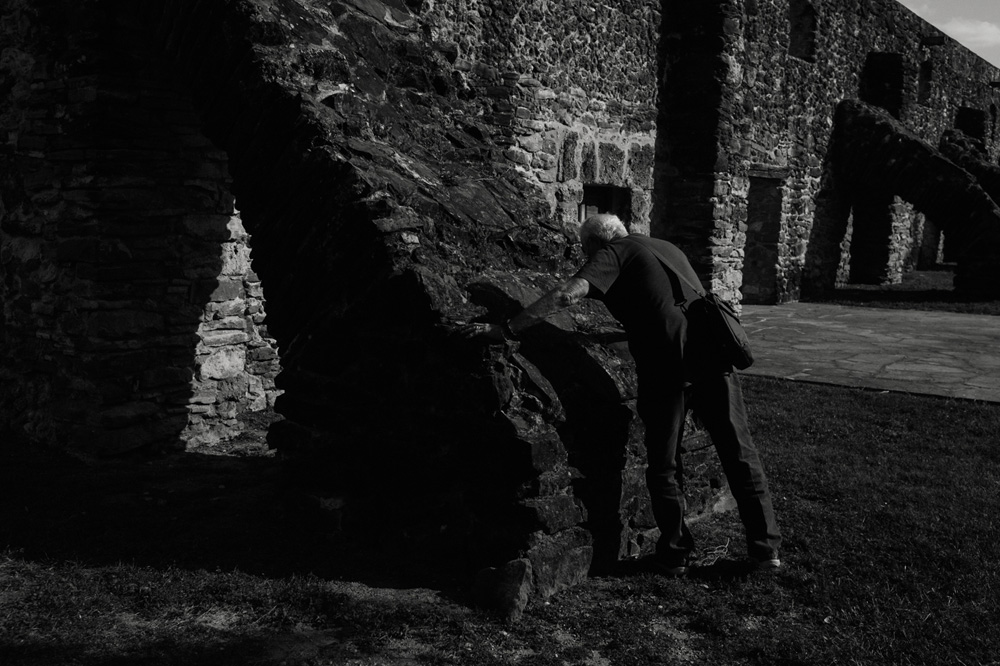
© Robert Pluma, My grandfather, Victor Vallejo Guerrero (81 at the time), demonstrating how he would climb to the tops of the walls at Mission San José as a child. He was among the last generation of Native inhabitants to live on mission land before it was taken from us. He had a sister who died young and was buried along the walls.
Congratulations to Robert Pluma for being selected for CENTER’s Excellence in Multimedia Storytelling Award recognizing his project, Hidden Histories of San Antonio. The Excellence in Multimedia Storytelling Award recognizes outstanding storytellers using lens-based media to create narrative-driven projects. The award is open, but not limited to, photography, video, new media, photojournalism, installation, and web-based works. Projects that inspire social action, document crucial issues, and amplify underrepresented voices are encouraged to apply. The Award includes a Mentorship, Complimentary participation and presentation at Review Santa Fe, Group Exhibition of Award & Grant Winners at the Turchin Center for the Visual Arts, Project Publication in Lenscratch & Feature Shoot, and inclusion in the CENTER Image Library & Archive.
JUROR: David Barreda, Senior Photo Editor, National Geographic shares his thoughts on this selection:
Robert Pluma is the recipient of the 2024 Multimedia Award. His project, Hidden Histories of San Antonio, reexamines the stories many thought we knew and shows how our understanding can be significantly deepened when viewing them through a different lens. At its best, multimedia can engage the audience to understand a story in a deeper, more profound way, and Pluma’s project interweaves his own family’s story with portraiture, testimony, and 3D scanning of primary objects to retell this historical narrative in a fresh way. Hidden Histories of San Antonio was in some ways the most ambitious project submitted from a multimedia perspective, but what drew me into it was seeing how Pluma’s explanation centered the participants—the most important part of any narrative.
It was refreshing to review many of the other projects submitted. A few that could revive honorable mentions are: Kathleen Tunnell Handel’s Where the Heart Is: Portraits from American Trailer and Mobile Home Parks for it’s structured visual approach combined with video interviews of the residents, Shantré Pinkney’s Raw, Black & Blue for her ambitious fictional love story told through a variety of media, and Matthew Finley’s An Impossibly Normal Life, which contemplates revisiting history again in the present. I do hope that Mr. Finley will be able to reimagine the physical space and bring his project to a fresh audience in a way that allows them to contemplate and engage through this created space.
Robert Pluma is a multidisciplinary artist, documentarian, and creative technologist dedicated to creating intimate, sensitive work to confront inequity and challenge power. This work exists to generate shifts in perspective, examine our capacity for empathy, re-center the outliers, and corrode barriers resisting our ability to act. His practice extends beyond traditional media, reaching deeper into our physical and virtual worlds. He use any means necessary to communicate and connect: photographs, moving images, written words, augmented reality, field recordings, ambient soundscapes, mixed-media sculpture, and electro-mechanical installations.
Pluma is an educator who has worked with a diverse range of ages, identities, and classes, leading workshops for elementary through high school students and teaching my his curriculum as a professor at Rutgers and Duke Universities. He works with archives in my his practice and in support of others, as with the Tim Hetherington Trust when he created an archive of every page of Tim’s work notebooks. He is a Coahuiltecan, Tejano, and Mexican-American Indigenous Futurist. He recently relocated from New York City, his home of decades, to Seattle. Pluma is a Magnum Foundation Grantee, Tow Knight Scholar, Reality Hack Grand Prize Winner, and sound + video editor for the Tribeca Film Festival category winner *Sandy Storyline*. His work has been featured in exhibitions, film, print, broadcast, and digital media, including National Geographic.
Follow Robert Pluma on Instagram: @robertpluma
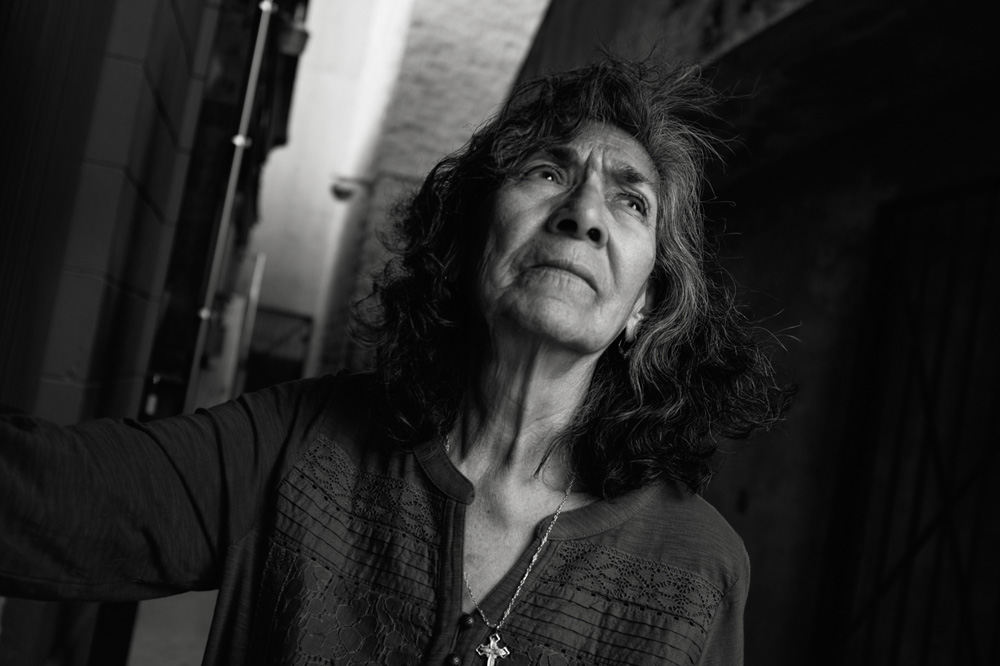
© Robert Pluma, Hortencia Hernandex Guerrero (my grandmother) stands near the window of the San Antonio restaurant Schilo’s, the only way they would allow her to purchase her food as a child. At the time, there was a sign on the door which read, “NO DOGS, NO MEXICANS, NO BLACKS”.
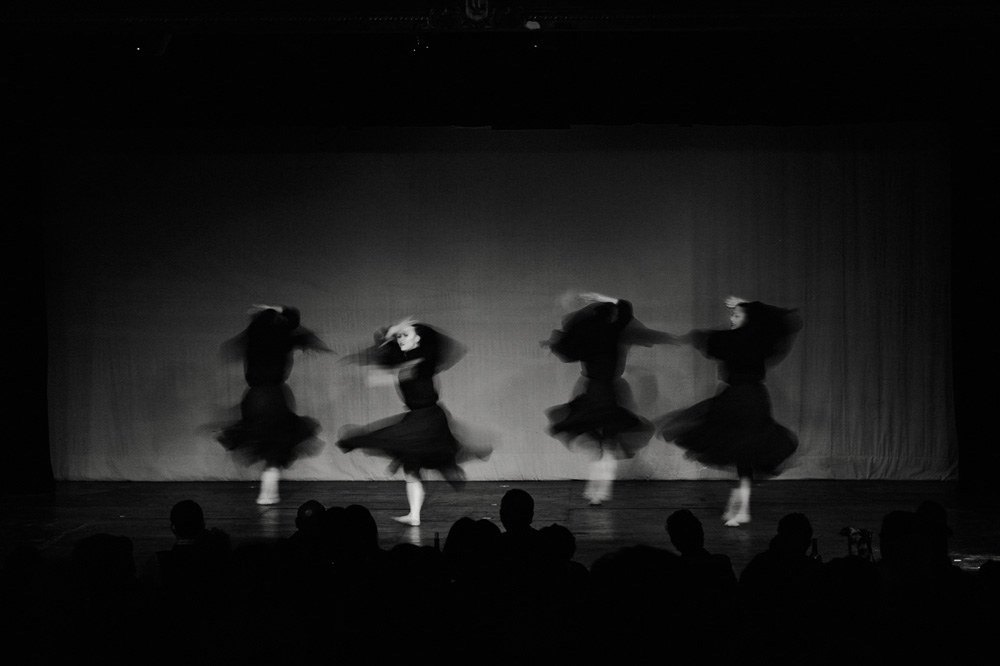
© Robert Pluma, Dancers manifesting the story of soldaderas – women soldiers of the Mexican Revolution – in San Antonio, Texas. Some soldaderas rose tot he level of commanders, while others played a supporting role. They were a mix of volunteers and those forced into service. Many were seeking vengeance for loved ones killed by the Federal Army, and some took on male identities.
Hidden Histories of San Antonio
Hidden Histories of San Antonio is a reclamation of the identity and narrative of my Coahuiltecan Indigenous ancestors – a counter-history to colonial accounts of what is now southern Texas. It will use augmented reality, mesmerizing slow-motion portraiture, and recorded oral histories. It is a deeply personal, research-driven effort to challenge the very notion of history and how much truth we can expect to receive from its authors. An augmented reality mobile application will open a portal into non-linear exploratory storytelling, allowing participants to discover interwoven tales of migration, religion, colonization, and resilience, one fragment at a time.
I propose the creation of a site-specific visually driven augmented reality application centered at Mission San José, a UNESCO World Heritage Site my ancestors were coerced into building by Spanish colonists. It will include a more expansive look at the region’s history and present oral histories of the recent and distant past. It will also include expert testimonies, archival records, significant information about specific locations, and 3D scans of artifacts. This will enable participants to encounter an essential retelling of the history of my people through an accessible, engaging, and revelatory experience.
In most historical examples of cultural erasure, there remain fragments of the people – symbols, songs, some words. The last generation to have lived on mission land will be gone soon – what do they remember which has never been recorded and will be forgotten if we don’t ask them? How can we visualize the memories of our ancestors? – Robert Pluma
Watch the project video – Hidden Histories of San Antonio Slow-Motion Video Portraits
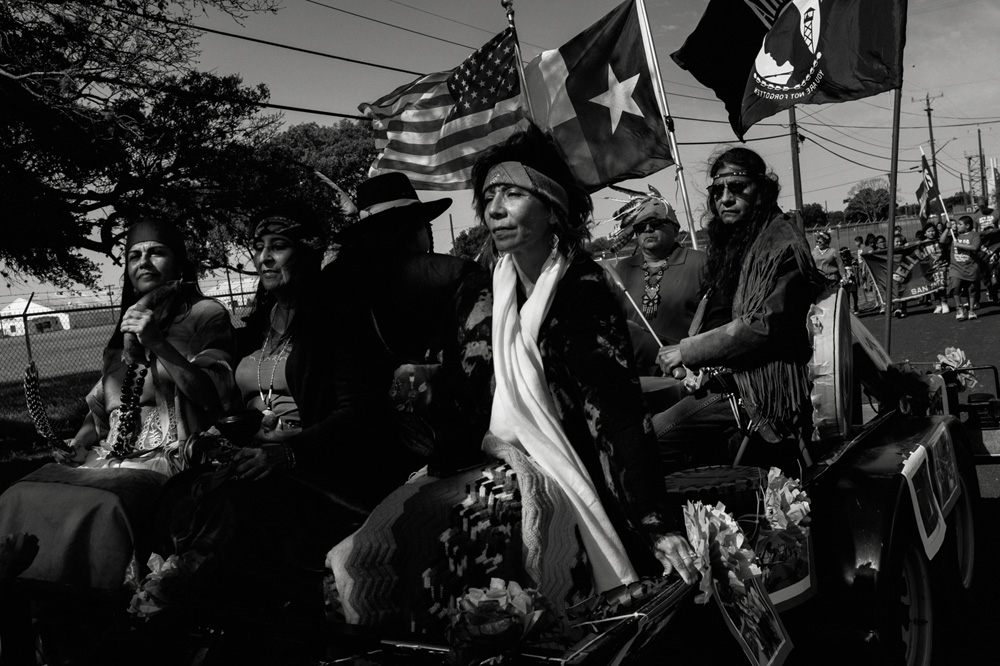
© Robert Pluma, A parade in Harlandale County, San Antonio, Texas, honoring descendants of the “Mission Indians”. “Indian” remains a common term in the region to refer to the Indigenous people of North America.
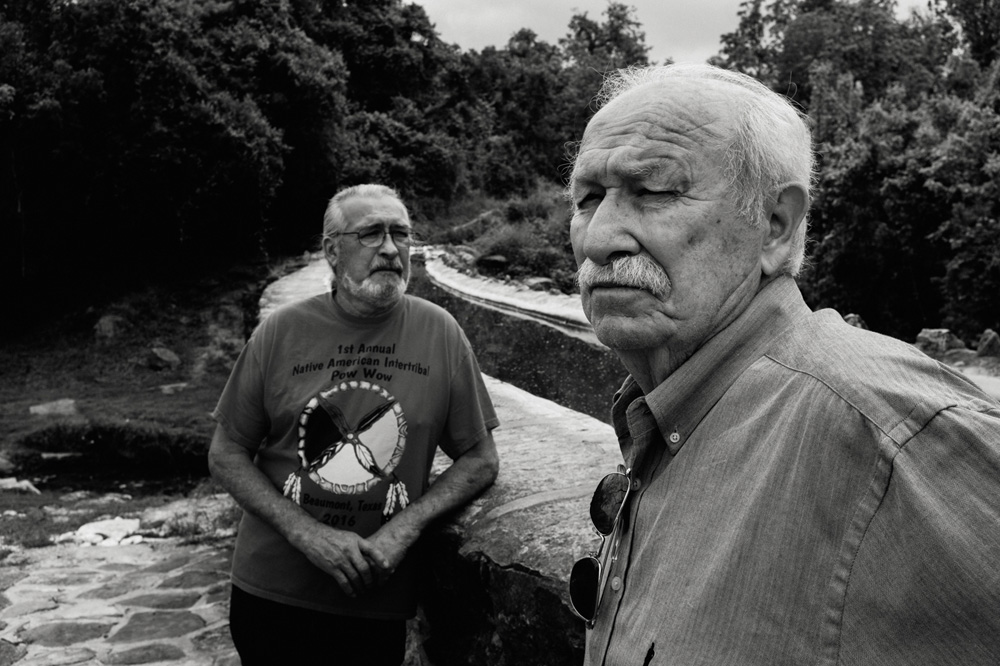
© Robert Pluma, My grandfather Victor Vallejo Guerrero (right) with his brother Raul (“Roy”) Guerrero at one of the acequias (aqueducts) built hundreds of years ago to water the missions of San Antonio. Victor and Roy would life the gates along some of the smaller irrigation channels to water their uncle’s farm.
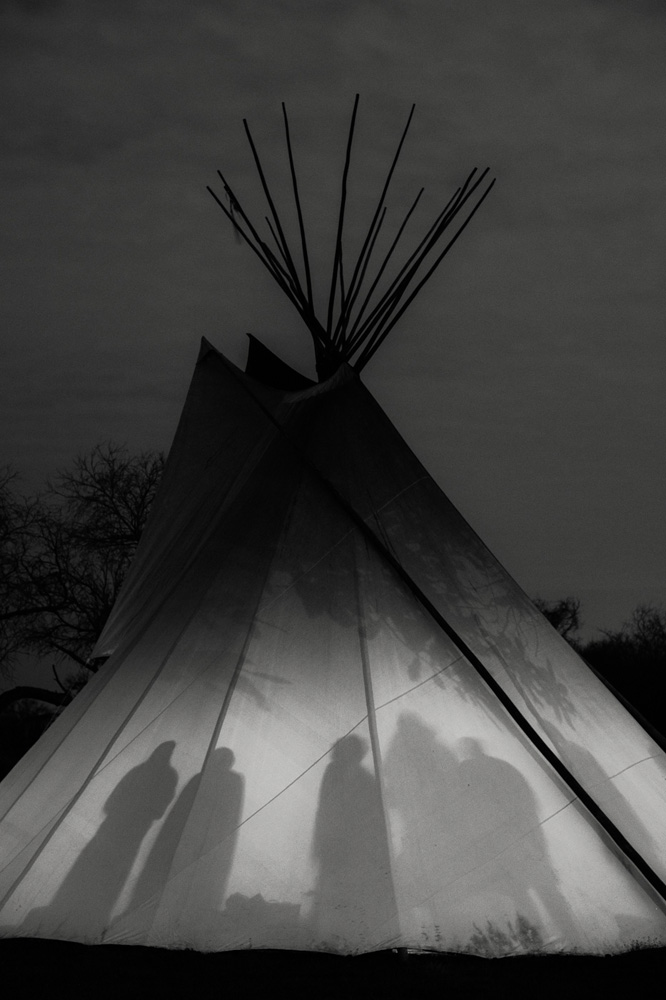
© Robert Pluma, Coahuiltecans preparing for an overnight ceremony on the grounds of Mission San Juan Capistrano, San Antonio, Texas. The proceedings of the ceremony are secret and sacred, though I can share that songs and rituals were performed around a fire until dawn.
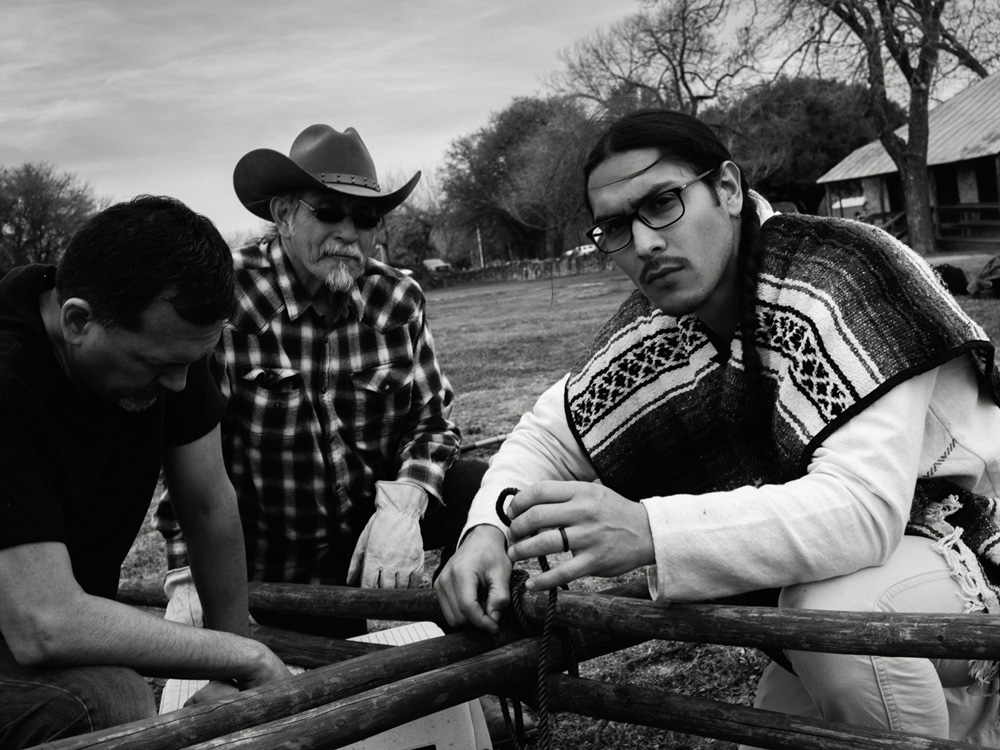
© Robert Pluma, Members of the Tap Pilam Coahuiltecan Nation dissembling a tipi after an all-night ceremony on the grounds of Mission San Juan. The tipi is not typically used by my people, though in this instance proved to be an acceptable representative temporary structure.

© Robert Pluma, Returning the earth to where it was dug out of a fire circle, used during the overnight ceremony. The bell tower of Mission San Juan can be seen in the background. This mission was on of five my people were ultimately forced to build and reside in through coercion, then violence. The cultural genocide which ensued removed many of our traditions and practices.
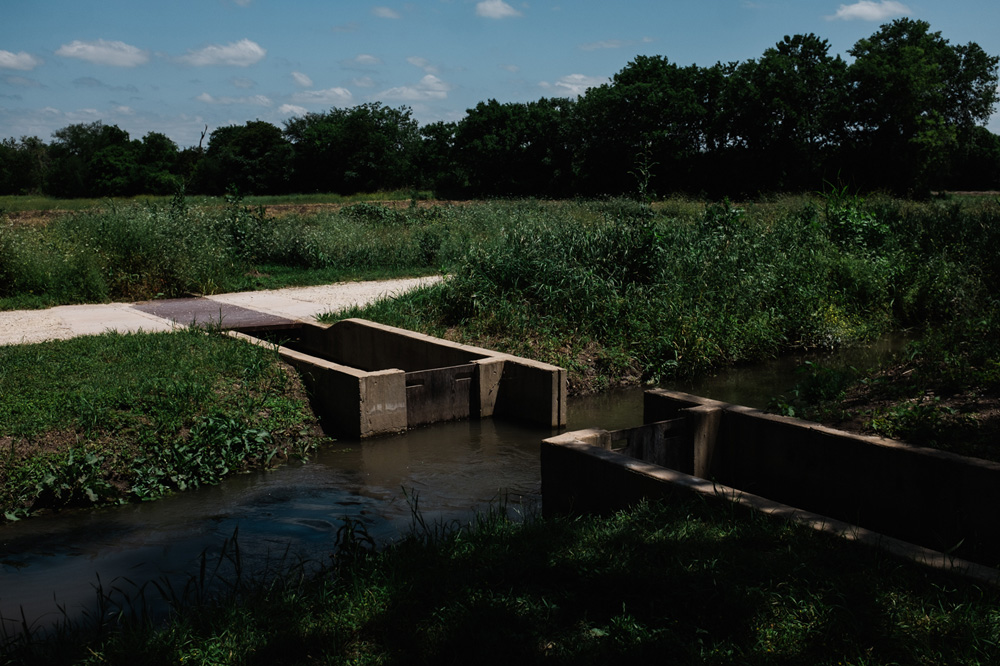
© Robert Pluma, An open acequia gate on a farm adjacent to one of San Antonio’s missions. The water is irrigated from the San Antonio River, called Yanaguana, the up-flowing waters of the spirit, by the Payaya / Coahuitecans. Our histories describe the headwaters of the river as the source of all life. Efforts are growing to document, preserve, and re-introduce original place names.
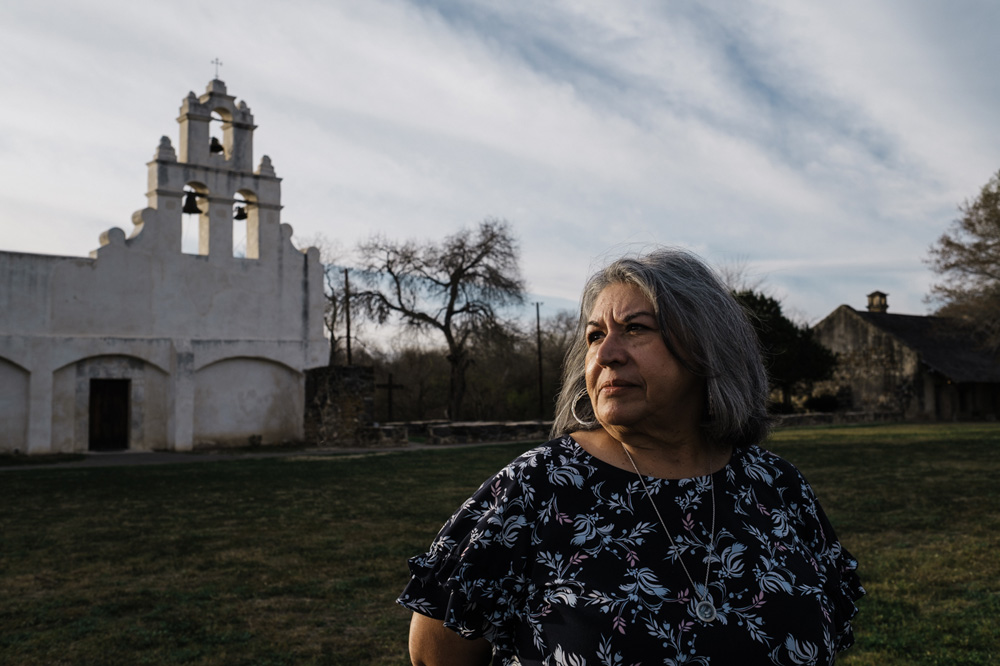
© Robert Pluma, Linda Graf-Wilcox, a mission descendant and knowledge keeper who lived on a mission land before our ancestral home was taken from us. Linda shared stories of her time growing up here at Mission San Juan Capistrano, one of five missions established by Spanish colonists in the 18th century.
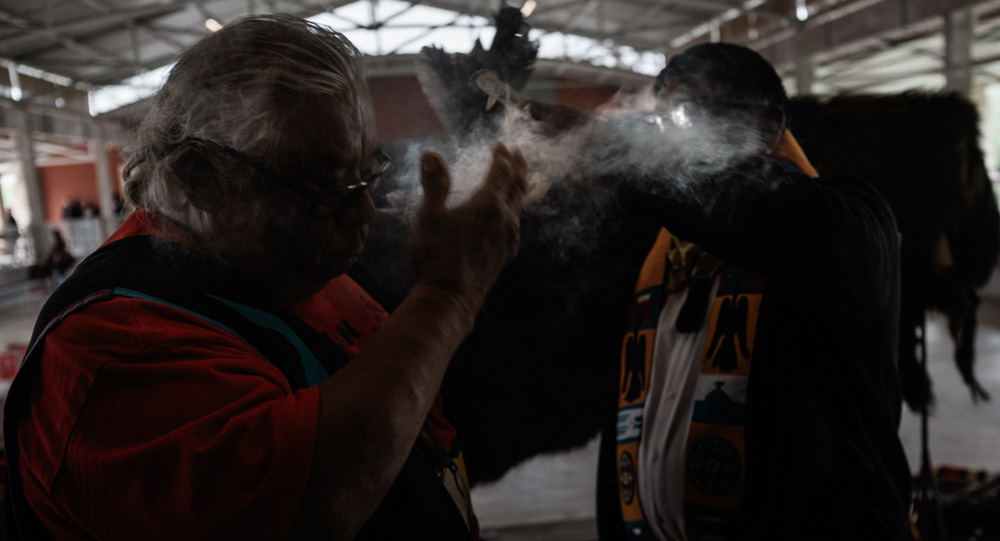
© Robert Pluma, Epifano Hernandez, a leader and knowledge keeper for a band of Coahuiltecans, at a smudging ceremony at the Indigenous Peoples Festival in San Antonio, Texas.
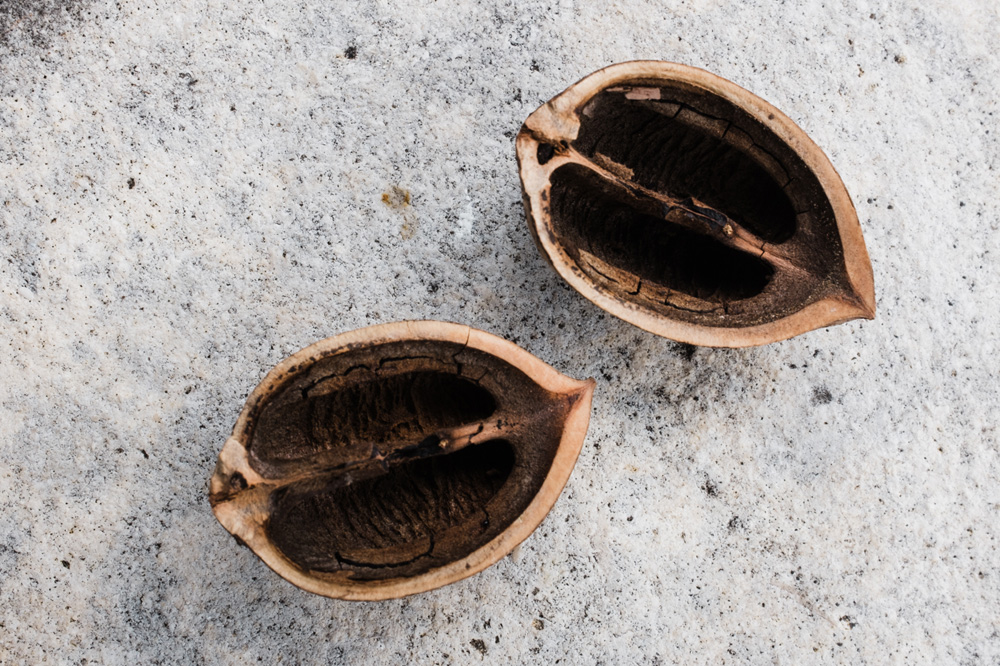
© Robert Pluma, Pecan shells found along the acequias of the San Antonio River. Pecans have been a critical food source for the Indigenous people of the region for thousands of years.

© Robert Pluma, Mary Ann Garcia shares images from her youth in the Catholic school on mission grounds. Like others, she shared stories of the violence inflcited on students who spoke Spanish, around 200 years after Spanish colonists would likely have been doing the same to anyone speaking the Indigenous languages of the region.
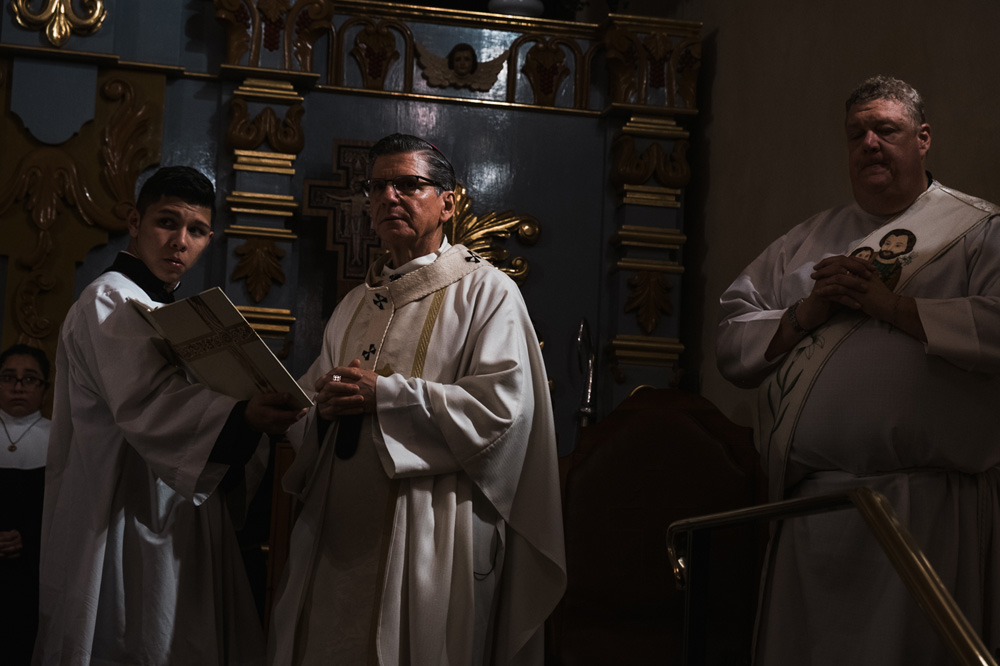
© Robert Pluma, Archbishop Gustavo Garcia-Siller conducts mass to commemorate the 300th anniversary of the founding of Mission San José, the mission which sits on the land taken from my ancestors, who built the missions and lived on this land since time immemorial. Archbishop Gustavo Garcia-Siller conducts mass to commemorate the 300th anniversary of the founding of Mission San José, the mission which sits on the land taken from my ancestors, who built the missions and lived on this land since time immemorial.
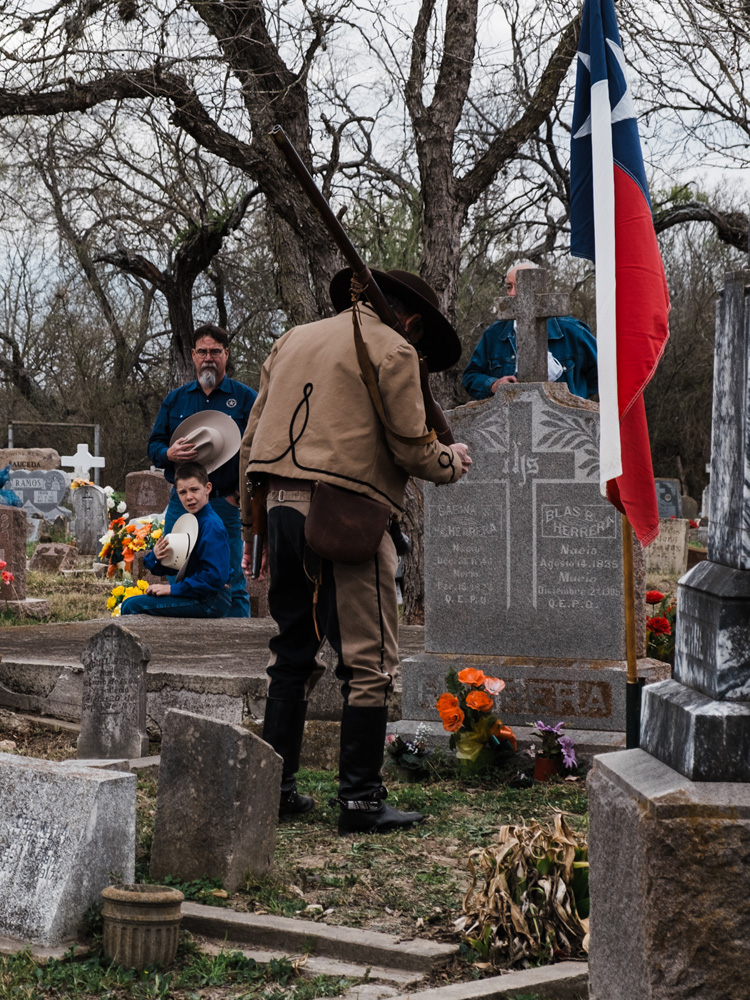
© Robert Pluma, A commemoration for Blas Maria Herrera, often described as the “Paul Revere” of the Texas Revolution, with customed re-enactors and cannon fire.

© Robert Pluma, A young girl moving through the church at Mission San José following mass. The church building was reclaimed by the Catholic Church and remains an active parish.
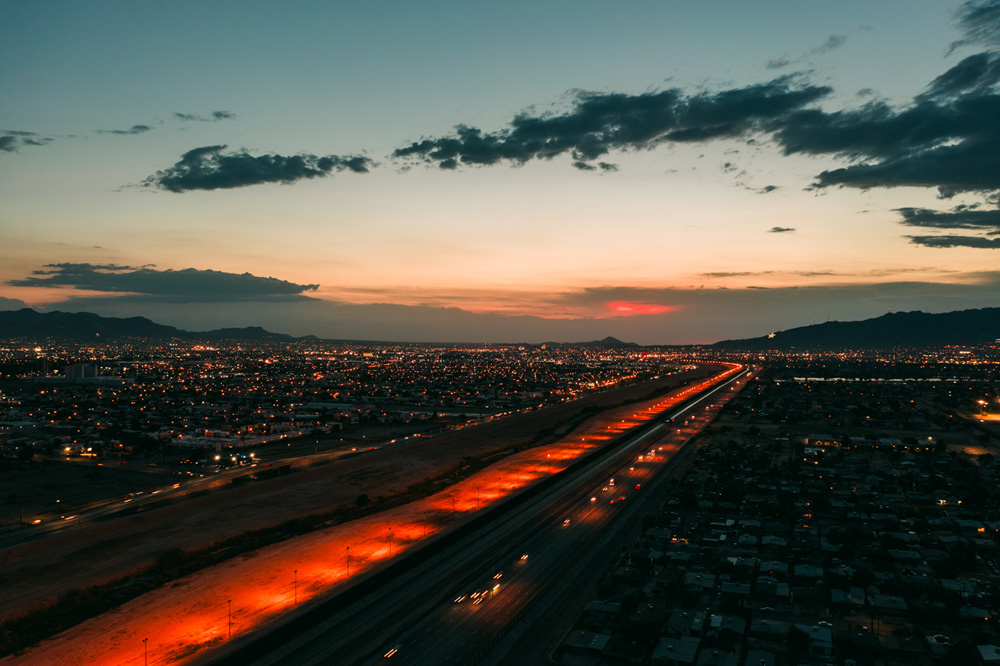
© Robert Pluma, The Mexico / United States border in El Paso, Texas. A playground is nearby along the highway on the U.S. side.
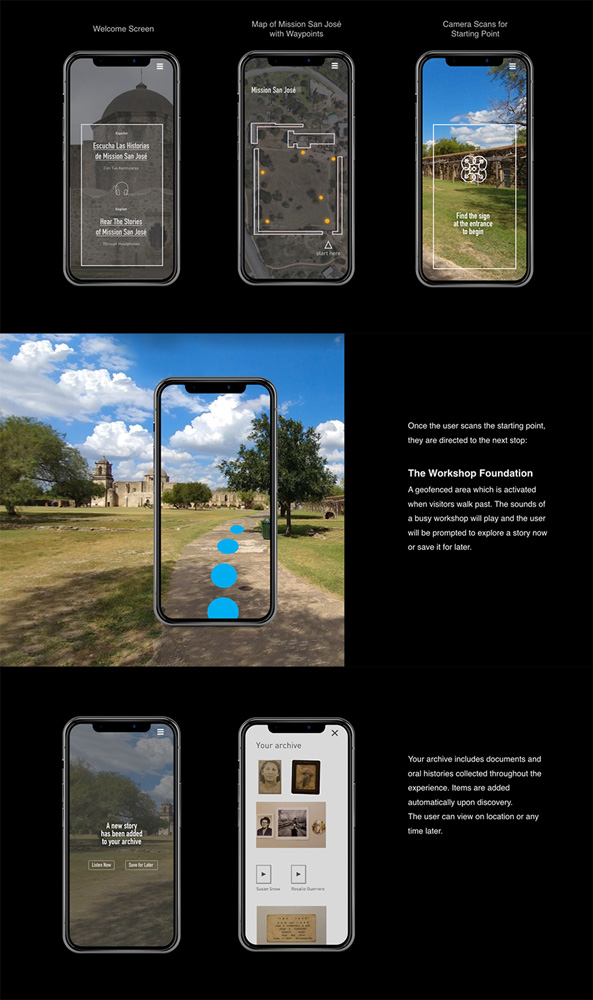
© Robert Pluma, A design mockup for an augmented reality application which will guide users around MIssion San José as they explore the grounds in search of interactive stories, oral histories, and historical fragments. Visitors to the San Antonio Missions will be able to explore hidden, non-linear stories connecting contemporary oral history + images with historical records + archives.
Posts on Lenscratch may not be reproduced without the permission of the Lenscratch staff and the photographer.
Recommended
-
Salua Ares: Absense as FormNovember 29th, 2025
-
Ricardo Miguel Hernández: When the memory turns to dust and Beyond PainNovember 28th, 2025
-
Pamela Landau Connolly: Columbus DriveNovember 26th, 2025
-
KELIY ANDERSON-STALEY: Wilderness No longer at the Edge of ThingsNovember 19th, 2025
-
Jackie Mulder: Thought TrailsNovember 18th, 2025



